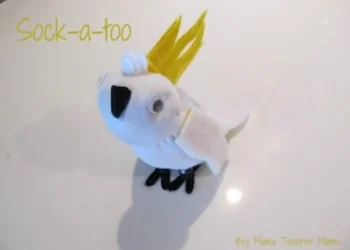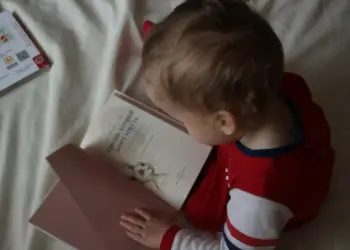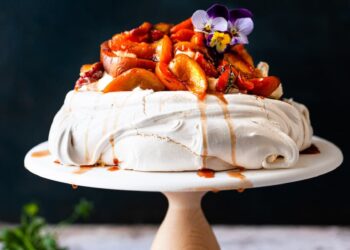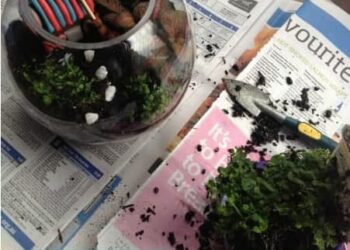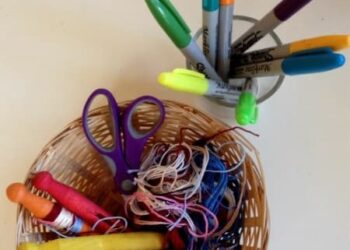A Glossary of Reading Terms talked about how the process of learning to read is similar to that of baking a cake. In this post, we are going to briefly define the ingredients needed for reading. Then, week by week we are going to explore each of the focus areas- discussing the terminology in more detail, outlining the purpose of each ingredient and providing some tips and activity ideas to develop these skills and understandings.
Each item listed on this cake is an important ingredient for reading (Please let me know if you think I’ve left any crucial ingredients off the list). They are the skills and understandings a child needs to grasp to read successfully.
Although each ingredient is interrelated, I’ve grouped them under focus areas for this series, and each focus area is represented by a slice of cake. I suppose they could also be looked upon as steps in the recipe towards reading.

Below is a glossary of the ingredients for reading.
GLOSSARY OF READING TERMS
A
Affix: A general term that refers to prefixes and suffixes.
Alliteration: Occurs when the words in a phrase begin with the same sound (e.g. The quick king created chaos).
Alphabet: A set of 26 single written symbols that, individually and in various combinations, represent the 44 sounds in the English language.
B
Base Word: The smallest part of a word that can carry meaning once a prefix and/or suffix has been removed. Also known as a root word or morpheme.
Blend A combination of two or three consonant sounds (e.g. bl, fr, str, st) that can be found at the beginning (onset) or end of a word. Each sound can be heard in a blend.
Blending: Combining parts of a word (individual sounds, onsets, rimes and syllables) to create whole words.
C
Chunk: An informal term for part of a word (e.g. blend, syllable, word family)
Compound Word: When two words are combined to create a new word (e.g. afternoon).
Comprehension: Understanding and making sense of what is being read.
Concepts of Print: The basic components that underpin how text works.
Consonants: Non-vowel speech sounds are made when a part of the mouth (tongue, lips, and teeth) obstructs the airflow from the lungs.
Context Cue: Using surrounding words, the broader text and illustrations as clues to help decode unfamiliar words.
Cues: Prompts or clues used by readers to decode words (also see Context Cue, Structure Cue and Visual Cue)
D
Decode: To apply a range of reading strategies (particularly a knowledge of letter-sound relationships) to correctly pronounce written words.
Deletion (and substitution): Creating new words by removing first sounds, final sounds, blends or word families from words or by replacing them with new sounds, blends and word families. (e.g. deleting /p/ in pluck to create luck- or substituting /pl/ with /tr/ to create truck).
Dolch Word List: A well-known list of 220 words that features the most frequently used words in the English language.
E
Environmental Print: Words, letters, symbols and numbers seen in the world around us (e.g. on billboards, shop fronts, magazines, bus timetables etc.).
F
First and Last Sounds: Refer to the sounds that begin and end a word.
Fluency: Reading confidently, accurately and at a steady pace.
G
Grapheme: A written symbol/letter that represents a sound. There are different types of graphemes:
A graph is a one-letter grapheme (e.g. ‘b’ as in ball).
A digraph is a two-letter grapheme where two letters work together to represent one sound (e.g. ‘ch’ as in chair).
A trigraph is a three-letter grapheme where three letters work together to represent one sound (e.g. ‘ igh’ as in light).
A quadgraph is a four-letter grapheme where four letters work together to represent one sound (e.g. ‘ough’ as in tough).
A split graph is when the letter ‘e’ works together with a vowel to represent a particular single sound, even though the two letters are separated by other letters. (e.g. ‘i_e’ as in site. The ‘e’ works with the ‘i’ to create the long /ī/ sound).
H
High Frequency Words: The most commonly encountered words in written material.
I
Illustrations: Pictures in books are used to support and add meaning to the text.
Isolation: The identification of a single sound within a word, such as the first sound, a middle sound or the last sound in a word.
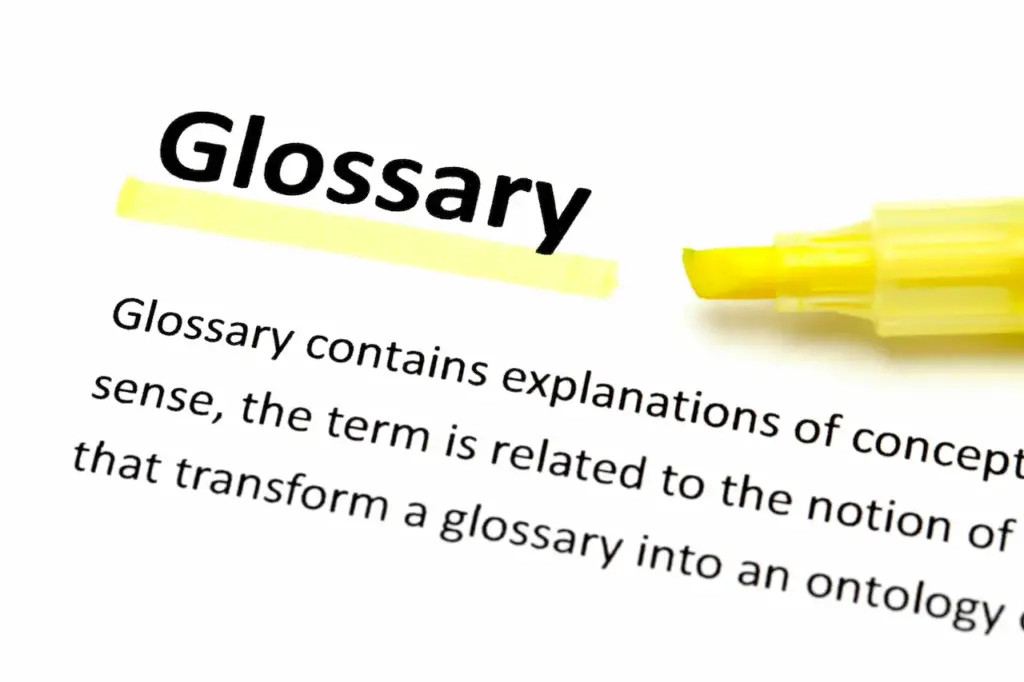
J
Just Right Books: Books that enable a child to read with confidence and with a high accuracy rate when applying learned reading strategies.
L
Letter Combinations: Combinations of letters that represent single sounds (digraphs, trigraphs etc.).
Letter Names: Titles given to the 26 written symbols of the English alphabet.
Letter Patterns: Combinations of letters commonly seen in words (e.g. common blends, trigraphs or word families).
Letter Recognition: The ability to identify and name letters of the alphabet, both uppercase and lowercase.
Letter-Sound Relationships (Letter-Sound Correspondence): The matching of written letter symbols (graphemes) to the sounds (phonemes) they represent. This term is also known as phonics.
Lowercase Letters: Print that is smaller than capital letters. Each lowercase letter consists of a body while some letters also include a head or tail.
M
Manipulation: Playing with sounds in a word to create new words through deletion and substitution.
Morpheme: The smallest part of a word that can carry meaning (e.g. unhappy has two morphemes: ‘happy’ means content, ‘un’ means not).
O
Onset (and Rime): Parts of a syllable. The onset is made up of the part/s of a word that comes before the first vowel and the rime includes the first vowel and subsequent consonants.
P
Phoneme: A single speech sound, combined with other phonemes to create words. They are represented by letters in written language (e.g. ‘at’ is made up of two phonemes).
Phonemic Awareness: The ability to hear and identify separate, individual sounds (phonemes) in spoken words and to manipulate them (blend, swap etc.).
Phonics: The relationship between letters and the sounds they make (i.e. identifying separate sounds and knowing which letters represent them, or seeing a letter and knowing which sound/s it represents).
Phonological Awareness: An understanding of word structure and the ability to identify and manipulate parts of spoken words (e.g. rhyming, segmenting into syllables, identifying onset and rime).
Pointing: Using a finger or tool while decoding to assist in matching letters to sounds.
Prefix: A morpheme added to the beginning of a base/root word to create a new word (e.g. ‘un-’).
Print Concepts: See Concepts of Print
Prior Knowledge: Specific knowledge, understandings and skills one gains through all of their life experiences to help them make meaning of a text being read.
R
Repetition: The use of recurrent sounds or words in texts.
Rhyme: The ability to hear, identify and produce words that end with the same sounds (usually in the last syllable of a word).
Rime: A rime follows an onset and includes the first vowel and subsequent consonants of a word.
Root Word: The smallest part of a word that can carry meaning once a prefix and/or suffix has been removed. Also known as a base word or morpheme.
S
Segmentation: To separate the individual phonemes (sounds) in a word.
Sight Words: Words that can be recognised and read as a whole without each sound needing to be decoded.
Structure Cue: Using knowledge of language and sentence structure to decode words.
Substitution: Creating new words by removing first or last sounds, blends or word families from words and replacing them with new sounds, blends and word families. (e.g. substituting /pl/ in pluck with /tr/ to create a truck).
Suffix: A morpheme added to the end of a base/root word to create a new word (e.g. ‘-ful’).
Syllables: Part of a spoken word consisting of one vowel sound.
Syntax: The sequence of words to form a correct sentence.
T
Tools: Devices used to aid in learning to read (e.g. pointers or checklists).
U
Uppercase Letters: Uppercase letters are also known as capital letters. They are all written at the same height and are used to begin a sentence or proper noun.
V
Visual Cues: Using knowledge of phonics, word structure and syllables to decode words.
Vocabulary: A mental bank of familiar words, their meanings and pronunciations that form part of a person’s prior knowledge.
Vowel: A speech sound made without any obstruction of airflow from the lungs. These sounds are represented by the letters ‘a’, ‘e’, ‘i’, ‘o’, ‘u’ and sometimes ‘y’.
W
Whole Language: A holistic approach to learning to read that places a focus on reading within the context of the individual learner and using a range of tools and strategies to see words as wholes.
Word Families: Groups of words that share common letter patterns (e.g. consisting of the same base word, rime, last syllable, suffix or prefix).
Word Fragmentation: The breaking of a word into smaller parts (phonemes, syllables etc.).
Word Recognition: Identifying and reading words by sight, without having to sound out each phoneme.



